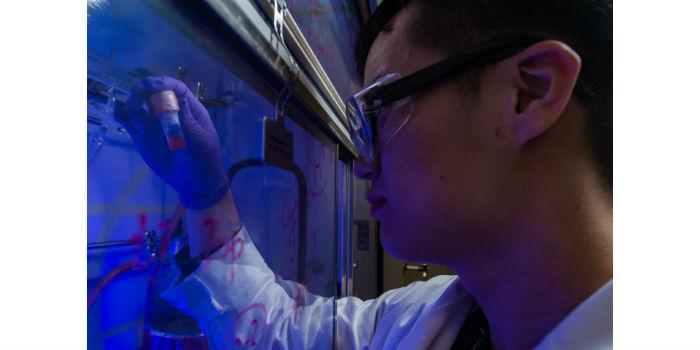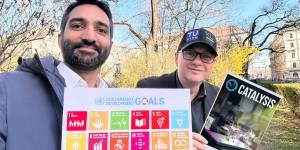 United States. Scientists at Rice University plan to harness the power of the sun to build functional synthetic polymers using photosensitive quantum dots (microscopic semiconductor particles) as a catalyst.
United States. Scientists at Rice University plan to harness the power of the sun to build functional synthetic polymers using photosensitive quantum dots (microscopic semiconductor particles) as a catalyst.
Luminescent dots are only a few nanometers wide, but are highly adjustable for their unique optical and electronic properties. They are starting to appear on modern screens, but they also lend themselves to industrial chemistry.
Materials scientist Eilaf Egap's Rice lab focused on the latter with its demonstration of a stable and economical method for making polymers through photocontrolled atom transfer radical polymerization. The method could replace molecular catalysts or expensive transition metals currently used to make things like methacrylates (common in plastics), styrene and block copolymers.
The lab used several light sources, including the sun and even a household lamp, to illuminate a solution of scattered quantum dots of cadmium selenide. That introduced the generation of free radical atoms from a bromide-based initiator, which in turn triggered acrylate monomers in the solution to be bonded. Because the monomers tested in Egap's lab did not have the ability to disrupt chain propagation, the process is called live polymerization.
"It will continue until you consume all the monomers or decide to finish," Egap said.
Egap, an assistant professor of Materials Science and Nanoengineering and Chemical and Biomolecular Engineering, said quantum dot polymerization holds promise for the highly controlled growth of sophisticated polymers. "The beauty of this is that if you have monomer A and you want to add monomers B and C in a specific sequence, you can do it," he said. "In a random polymerization, they would be randomly dispersed along the main polymer chain.
"The implication here, and part of our broader goal, is that we can synthesize organic-inorganic hybrid structures in a controlled and periodic way for many applications," Egap said.
She anticipates that the process could also lead to the discovery of new polymers. One could be a quantum dot photocatalyst with an attached semiconductor polymer that would simplify the manufacture of solar cells and other devices.
"These could also be relevant for light-emitting diodes, magnetoelectronics and bioimaging," he said. "We could grow them all at once." That's the dream, and I think we're within our reach."
The National Science Foundation supported the research.
Source: PHYS.

























Leave your comment